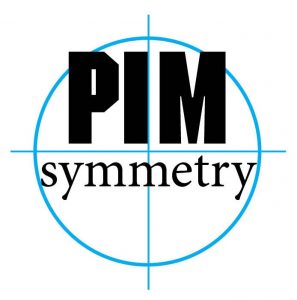Database Publishing:
Redefining the Preparation, Culture, Processes and Attributes Needed to Change a Product-to-Market Workflow
- Content Management has long been the strategic initiative that binds a company’s digital assets (including images, copy, attributes, sales data, etc.). But, typically, the publishing groups play a second fiddle to these sometimes larger ERP installations.
- Database Publishing (DBP) is the often overlooked, but maybe the most highly proficient addition of content management. DBP takes into consideration how data gets to a printed catalog page. When implementation and a Right-Up-Front (RUF) attitude combine, the results can be mind-boggling impactful.
- Software just doesn’t get implemented without a complex Change Management process. But, it goes beyond the processes and the software. The success lies in the people, the leadership and the belief that something greater will happen as a result of the change.
- This paper will define the key steps needed in an organization to have the most thorough model for this change, with the expectation of the highest degree of success. By no means is this considered an easy or quick task, but an arduous and complex one – requiring leadership at multiple management/executive levels, and a culture that can remain positive, flexible and focused on the main goal of the project.
- By touching multiple levels and silos within a company, the top level Executives are challenged to create the right environment for this change.
- Few organizations have had the hierarchy, the insight, or the resources to accomplish this change in total as described in this paper. Many want to rush to the end, but the mantra of doing something “Right Up Front” (RUF) can result in payoffs well beyond expectations.
- Catalogs have become an engaging interface to online services and the need to sync the two has become mission critical. The process of syncing the two workflows entails a major transformation – Learn how to crack the code for how to accomplish this transformation!
www.scribd.com/doc/16460979/DBP-White-Paper
Endorsement from Michael Moon, Masterclass facilitator of Service Innovation workshops / Editor and Chief, Journal of Digital Asset Management:
- A great piece!
- Both above and in your paper you make the case that:
- Database publishing of catalogs, direct mail, and personalized collateral requires a mature, in-place operational capability (accountabilities, systems, processes, and technologies).
- Database publishing shares many of similar, if not identical, change-management issues with analysis-driven marketing communications and customer engagement.
- Few organizations have invested in change management as a core operational capability of the firm. 4.
- Thus, most organizations facing moderate to significant change encounter tremendous resistance on the front end, lots of stops and starts in the initial phases, a lot of disruption and annoyed process owners and stakeholders and, finally, problematic, ever-more-distant, or mirage-like return on investment. 5.
- Change management without leadership quickly devolves in politics and vicious circles of bruised egos, covert resistance, and non-accountability for even the most simple task-deliverables. 6.
- Change management without a driving business strategy usually stalls before hitting the half-way mark: funding sources see no prospects of returns or glory, pulling back people and money “allocated” to the project. 7.
- Change management without a transparent, everyone contributes (“turkey burger-making”) procedure that ensures that all the affected stakeholders co-define the business problem, co-create the business case, co-envision the future-state capability, and co-invest in the project roadmap … well, you end up with a bunch of outlookers and rubber-neckers to the eventual train wreck
- This paper does a brilliant job of explaining “innovation leadership” from the POV of a masterclass practitioner–step by step “here’s how to transform” an organization (catalog marketer, DB marketer, agency, or customer engagement operations) while still making your quarterly quotas.
- Finally, it introduces a sly concept: printed catalogs ARE a customer engagement touchpoint that must sync up with the online touchpoints and call interaction centers. Getting print, online, and live touchpoints on “the same page” demands a new operational capability—the result of innovation leadership (and not just change management left to its own devices!)
http://www.palgrave-journals.com/dam/index.html
Long-form interview with DAM Guru Michael Moon and Tom Marine, the masterclass innovation leader who implemented, in record time, a DAM-enabled workflow for a multichannel catalog marketing firm.
damformarketing.com/series/interview-tom-marine-gets-right-upfront/
A case study on best practices to use when implementing – database publishing solutions in a multichannel (catalogue and internet)-based environment. Learn how doing things ‘Right Up Front’ can improve the workflow process, the change management process and end results. Preparing for change is as important as the change itself, and possibly more important than the results, because the better the preparation, the easier the change, and consequently the higher the degree of improved results.
www.palgrave-journals.com/dam/journal/v5/n5/abs/dam200919a.html
Free E-Book on PIM Profile Challenges
Key information on how to approach the different decision-makers in the PIM buying process.
http://hubdesignsmagazine.com/2014/02/03/a-free-e-book-by-tom-marine-of-b2x-solutions/
10 Reasons to Buy a PIM
Short and sweet reasons to help justify the PIM buying cycle.
http://hubdesignsmagazine.com/2014/01/20/top-10-reasons-to-use-product-mdm-by-tom-marine/
The Easiest ROI for Buying a PIM
Some are obvious, but if you’re struggling, this short article might help.
http://hubdesignsmagazine.com/2014/01/13/the-easiest-roi-for-product-mdm-by-tom-marine/
